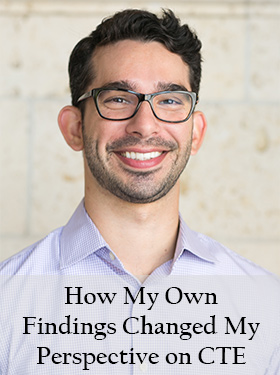It’s not just that career and technical education (CTE) has an image problem – historically, vocational education was designed to prepare high school students to transition directly into the workforce, not into postsecondary education. Combined with the fact low-income students, students of color, and special needs students were disproportionately funneled into these curricular pathways, vocational education was justifiably viewed as a mechanism for perpetuating inequality. One by-product of the “college for all” movement is a precipitous decline between the 1980s and the 2000s in the amount of vocational education high school students complete, which many cheered as a victory for historically disenfranchised students.
The good news is things are changing. Most notably, the federal Perkins legislation that supports CTE has gradually promoted a stronger linkage between CTE and postsecondary education, even programs of study aligned with the expectations of majors at 4-year colleges and universities. Equally important has been a reconceptualization of the false dichotomy between “vocational” and “academic” in favor of an approach that integrates challenging academic content with rigorous applications of knowledge in skills in real-world contexts. The Career Clusters Framework® has also aided states and districts in designing CTE programs with greater alignment with postsecondary pathways that lead to viable careers. But have all these reforms changed the reality of CTE on the ground and, most critically, the outcomes of students who pursue CTE?
I tried to answer this question in a recent study that appeared in the journal Educational Policy, and even I was surprised with the results. Using data from cohorts of Texas students who graduated high school in 2008 and 2014, I found that CTE concentrators in 2014 were significantly more likely to go to college than students who did not concentrate, controlling for a variety of factors like students’ demographic backgrounds, their academic achievement, and the high schools they attended. Interestingly, CTE concentration was unrelated to postsecondary enrollment for the 2008 cohort, suggesting that these programs are indeed becoming more effective. Crucially, CTE concentration was also estimated to be positively related to enrollment in 4-year colleges for 2014 graduates, which is the first time this type of positive relationship with 4-year enrollment has been identified to my knowledge.
Of course, it’s possible that CTE programs are encouraging students to pursue college but aren’t really preparing them to be successful once enrolled, but that’s not what I found. Among students who enrolled in college their first year after high school graduation, CTE concentrators were also more likely than their peers to persist to the second year. Although postsecondary attainment data is not yet available for the 2014 cohort, this result suggests CTE programs are a viable way to increase college readiness and completion in addition to postsecondary access.
I also analyzed the relationship between CTE concentration in specific career clusters and postsecondary outcomes. Areas such as hospitality and tourism, manufacturing, and transportation were indeed inversely related to college enrollment. However, the vast majority of CTE areas were positively related to both enrollment and persistence.
Perhaps most importantly, I found limited evidence of stratification in CTE completion. Although low-income students were slightly more likely to concentrate in CTE, Black and Hispanic students were less likely to concentrate in CTE than were White students. Between this finding and the positive relationship between CTE and postsecondary education, it appears that CTE’s reputation as a mechanism for stratification no longer holds, at least in Texas. I’m excited to learn whether this finding holds in other states, and also to combine these analyses with qualitative research in order to deepen our understanding of the strategies schools and districts are pursuing to tighten the alignment between CTE and postsecondary education.
Dr. Giani is a research scientist in the Office of Strategy and Policy at The University of Texas at Austin and OCCRL affiliate.
